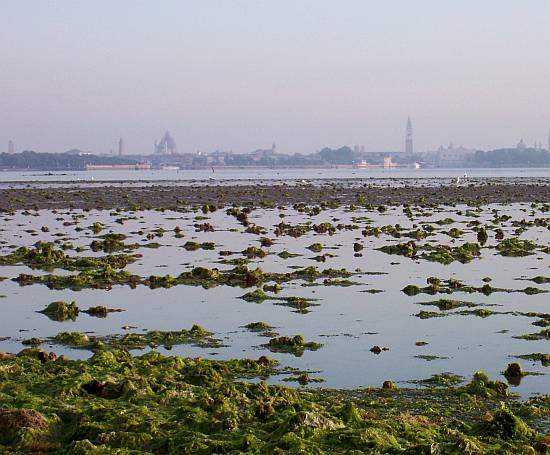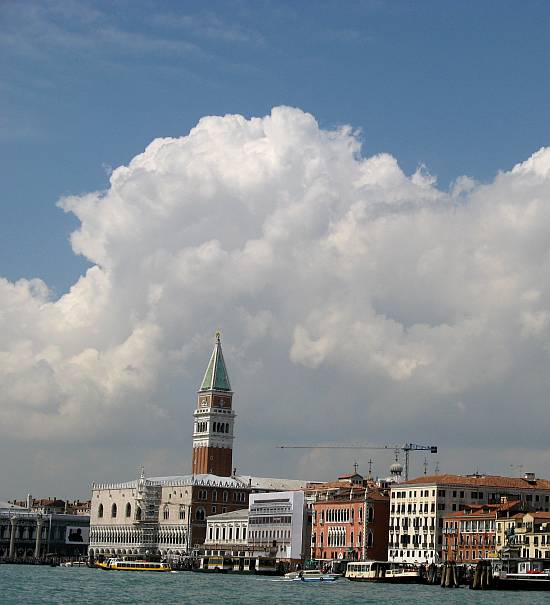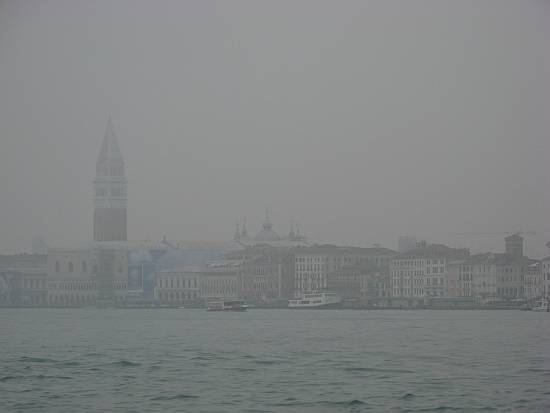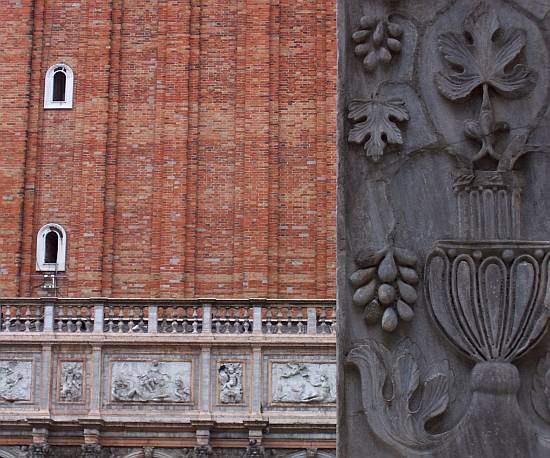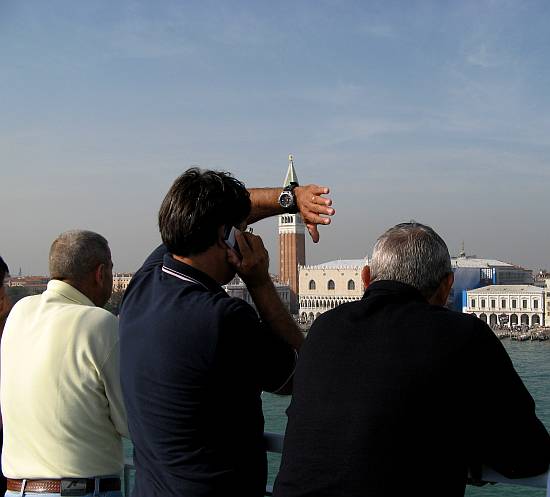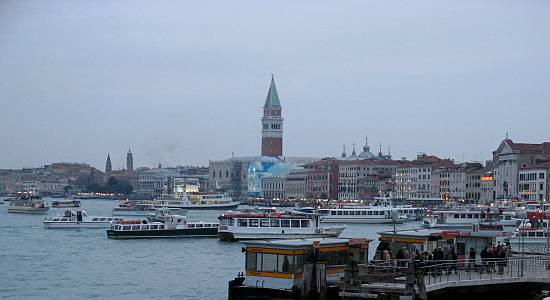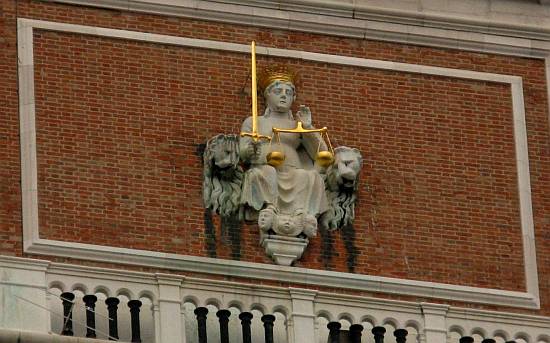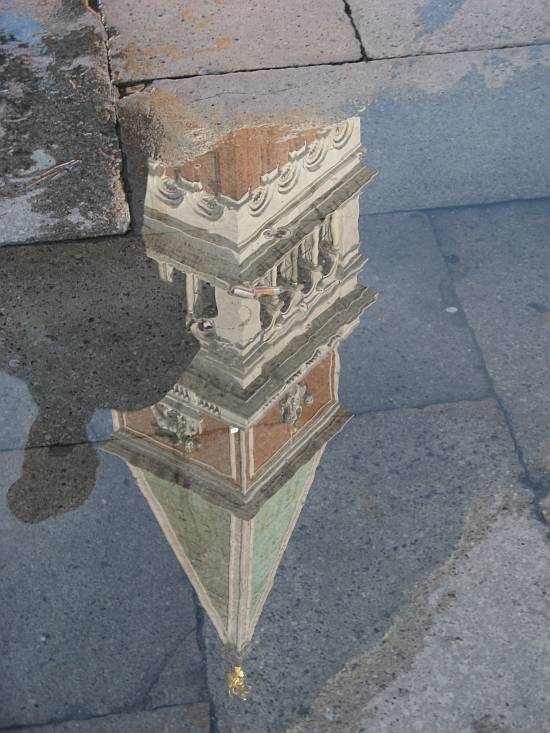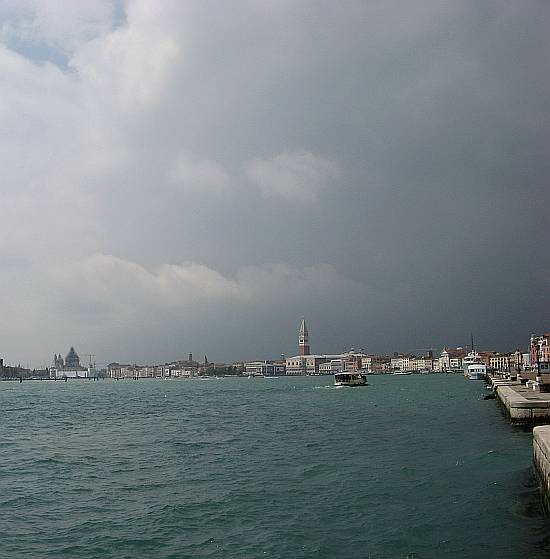April 25 is here again, one of the bigger days in the Venetian calendar. Its importance is in inverse relationship to the ceremonial recognition of it, which is modest to the point of near-invisibility.
A long-stemmed red rose (the “bocolo”) and a scattering of fresh laurel wreaths leaning against important municipal monuments are about the only signs of anything different about today. Lovely, but small.
This year, however, a special significance joins the memory of San Marco and of the liberation of Italy in 1945.
One hundred years ago today, the campanile of San Marco was inaugurated — that is, the reconstructed tower which had collapsed at 9:53 AM on July 14, 1902.

The city was justifiably proud of having rebuilt its most visible monument as it had vowed to do: “Com’era e dov’era” — as it was and where it was. And in a mere ten years, too. Not bad, considering that they had had to work on the foundation, cast four new bells, repair the pavement of the Piazza, and sift tons of wreckage to recover any bits that were reusable. And it may well be the only public work which was not undertaken to the accompaniment of “no ghe xe schei.”
The history of this belltower is — like most things here — very interesting and very complicated. The version we see today was constructed in 1511, the last in a line of ever-heightening towers on that spot which had served as lighthouse, lookout point, and bell-bearing structure. Every church has its bells somewhere nearby, and the basilica of San Marco has this monolith. Whether or not you think it’s beautiful or appropriate (naturally opinions swarm all over the place), it is undeniably the guardian of Venice. “El paron’ de casa,” as it is known more familiarly — the head of the house.
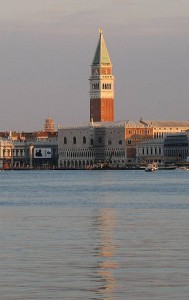
If nothing else, the fall and rise of the campanile of San Marco stands as yet another monument to political and bureaucratic misfeasance. Because while the city can be justly proud of its accomplishment in rebuilding it, a dark, thick veil of silence covers the reasons for why it happened in the first place. As in: It shouldn’t have happened at all.
Here is a rapid review. The campanile had suffered almost every kind of damage over the centuries — earthquakes, fires caused by lightning strikes, general wear and tear — and had undergone more restorations than Joan Rivers.
But with the arrival of modernity, more things were done which a 400-year-building weighing around 13,207 tons (11,981,224 kilos) wasn’t able to withstand. Such as the cutting of a hole in the brick wall big enough to get the caretaker’s new stove in.
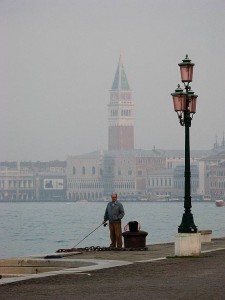
While discussions continued (the eternal confrontation between the “bail! bail!” party and the “row faster!” party), a cordon was placed around the tower to keep the public at a safe distance.
On July 13, some of the technical experts — engineers! architects! — were still proclaiming that there was no danger of collapse, but recommending further study.
At 4:00 AM on the morning of July 14, a worried Luigi Vendrasco, the master mason, came to the Piazza. He could see that the deterioration was increasing at a noticeable rate. At 5:30 came Domenico Rupolo, the architect in charge of the works. Together they rushed to Pietro Saccardo, the overseer of the basilica of San Marco. They all headed for the Prefect, where they were joined by Federico Brechet, director of the Regional Office for the Conservation of Monuments, and Alberto Torri of the Civil Engineers.
Brechet and Torri wanted to go up the campanile for a closer examination, but Rupolo talked them out of it. I’m guessing they sent him a big gift basket every Christmas for the rest of their lives.
Meanwhile, a passing journalist asked a policeman stationed as a guard in the Piazza for any news. The policeman replied, “Mi digo che no passa sinque minuti e casca zoso tuto.” (I’d say that in less than five minutes the whole thing is going to fall down.) He called it.
At 9:30 the shops on the south side of the Piazza were ordered closed, and the Piazza was cleared out. At 9:47 pieces of stone began to fall. At 9:53, the whole thing went down with a dark, heavy roar, raising a cloud of dust of Biblical proportions.
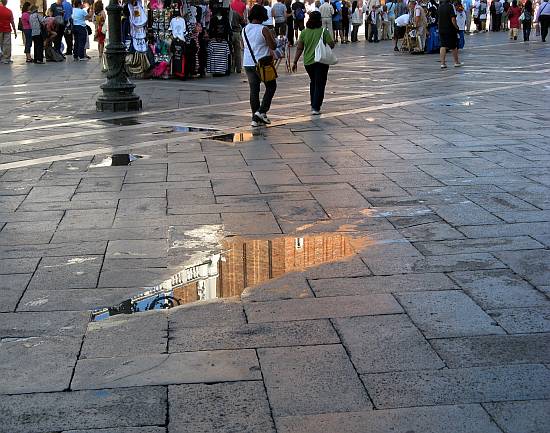
“What is there to marvel at?” raged Luigi Vendrasco, the master mason who had been pleading for years for immediate and correct intervention to prevent this very occurrence, creating so many enemies that he lost his job. “It fell? I’ve been saying this for ten years! I’ve been amazed that it hasn’t happened sooner. And then, it hasn’t ‘fallen’ — they threw it down and it obeyed!… Without a doubt the campanile could have been saved, if since 1892 certain things had been done and certain other things hadn’t been done. Even in these last few days, if, instead of putting on lots of monitoring devices on a wound that even a blind person could see, that that wound had been directly addressed. The final and determining cause of the breakdown was the cut at the base for the work on the Loggetta di Sansovino.”
He was referring to the little job undertaken in early July to replace the lead roof of the Loggetta, which was attached to the campanile facing the basilica. To prevent rain from filtering into the bricks, an overhanging slab of an undefined material had been inserted into the campanile.
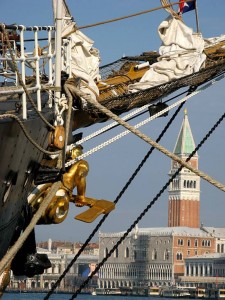
There is a little game kids used to play at the beach — maybe they still do — called the “gioco della polenta.” You make a big mound of wet sand. Then each of you in turn c-a-r-e-f-u-l-l-y removes a handful of the sand from the base of the mound. The object is to not be the person whose handful causes the whole thing to cave in.
The mayor said the collapse of the campanile had been unforeseeable. He must never have gone to the beach.
